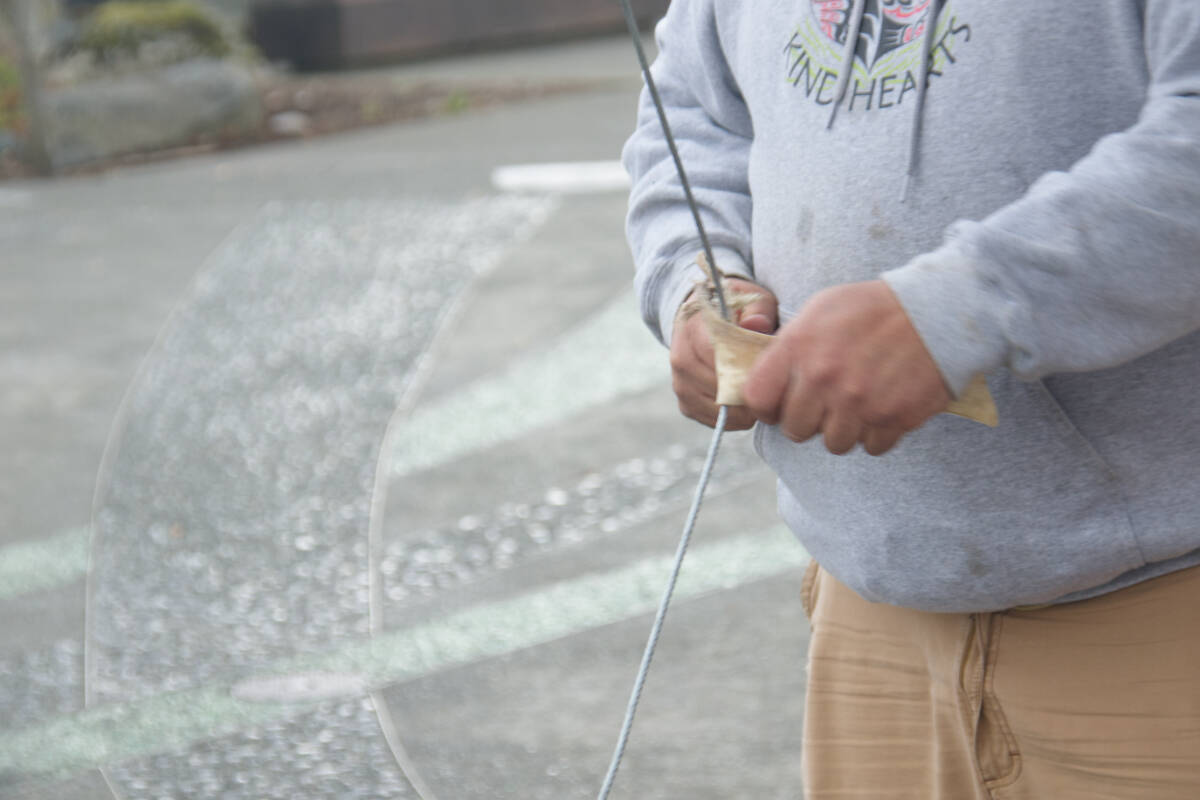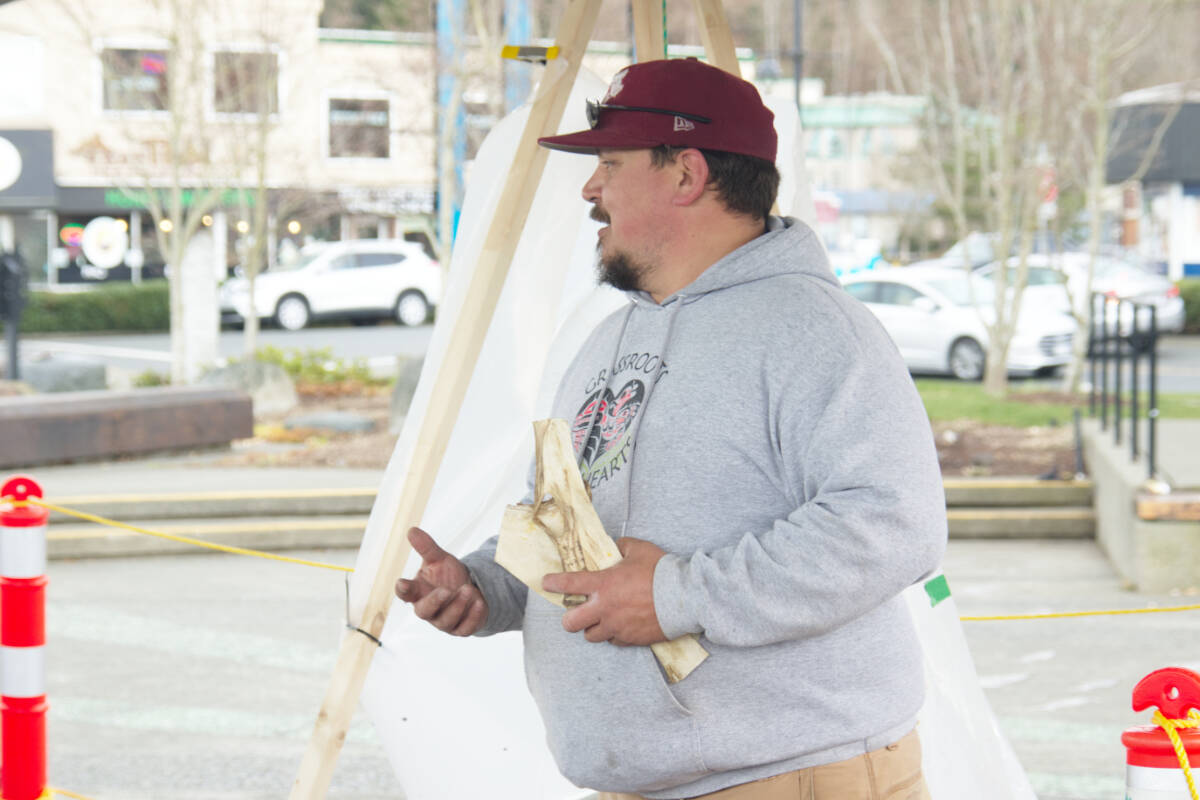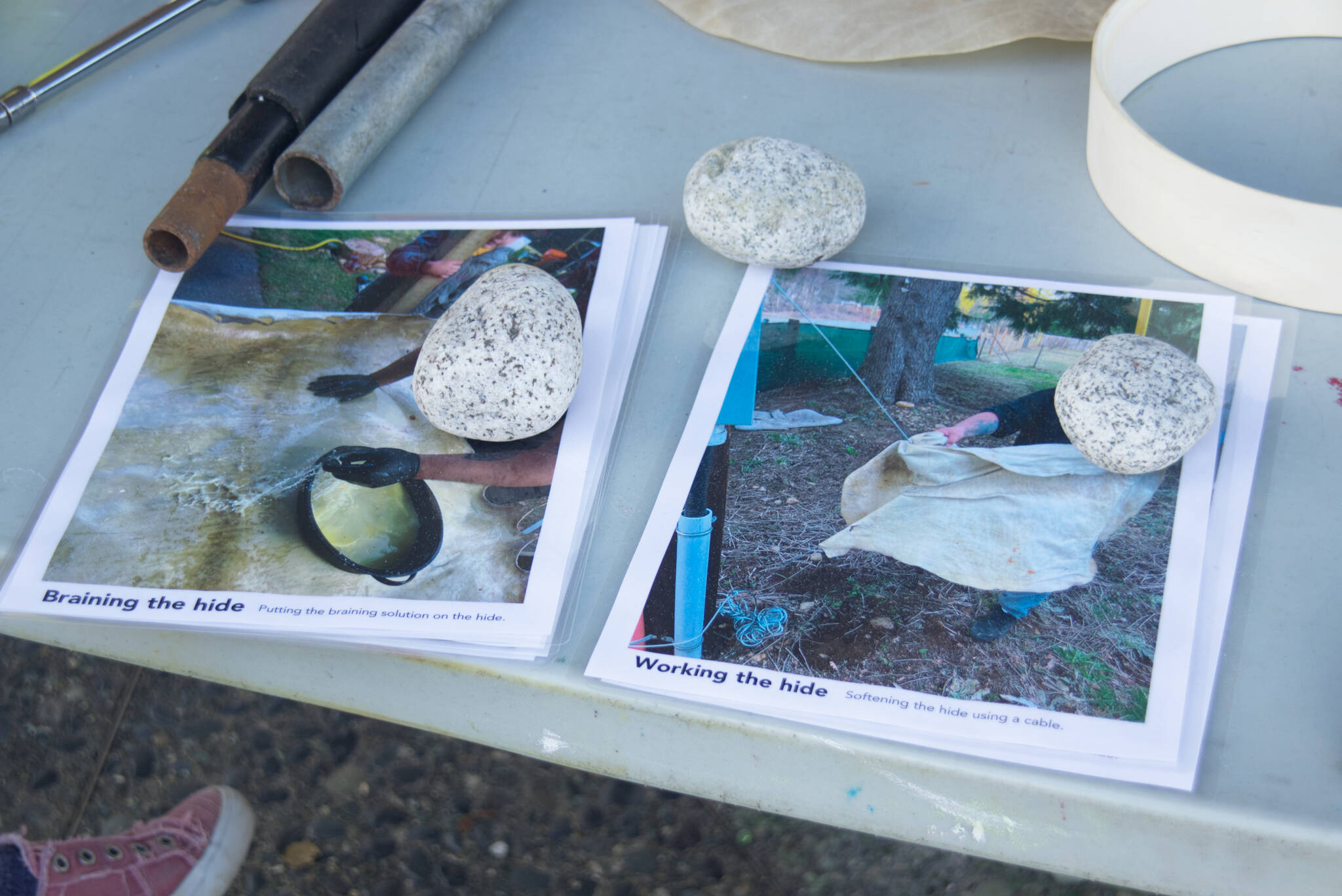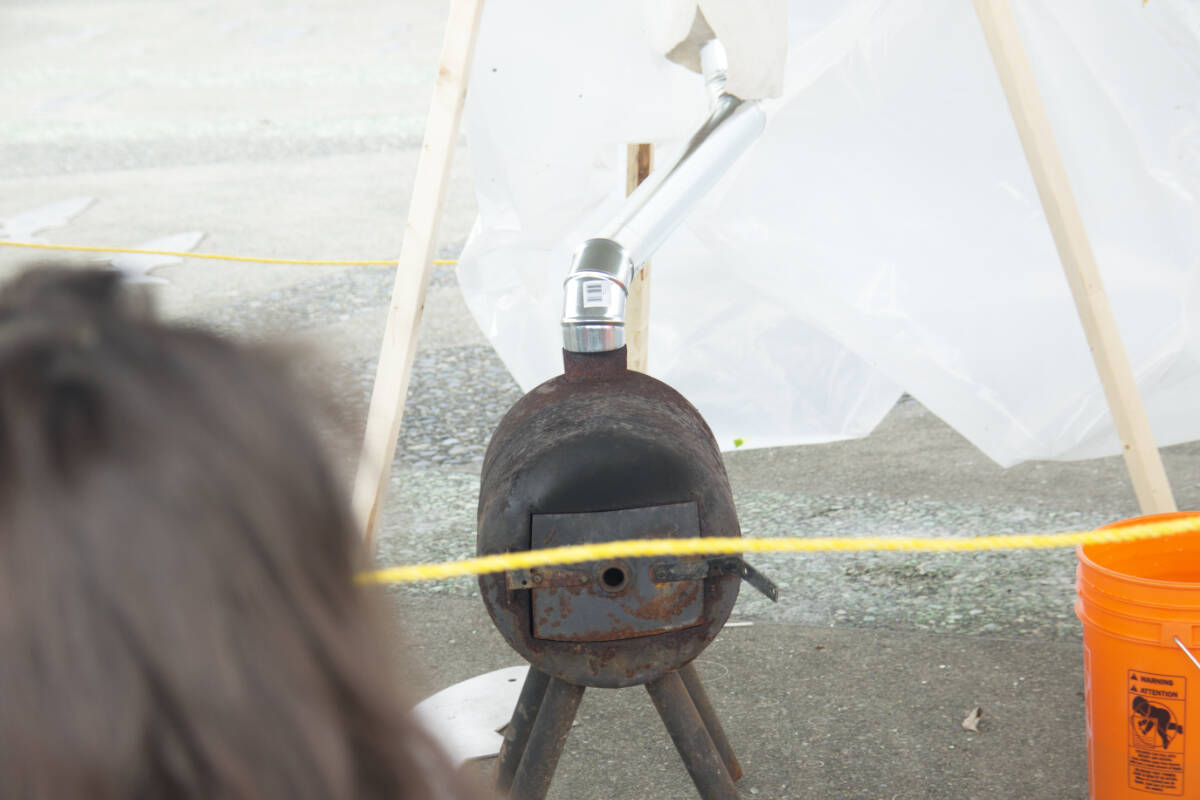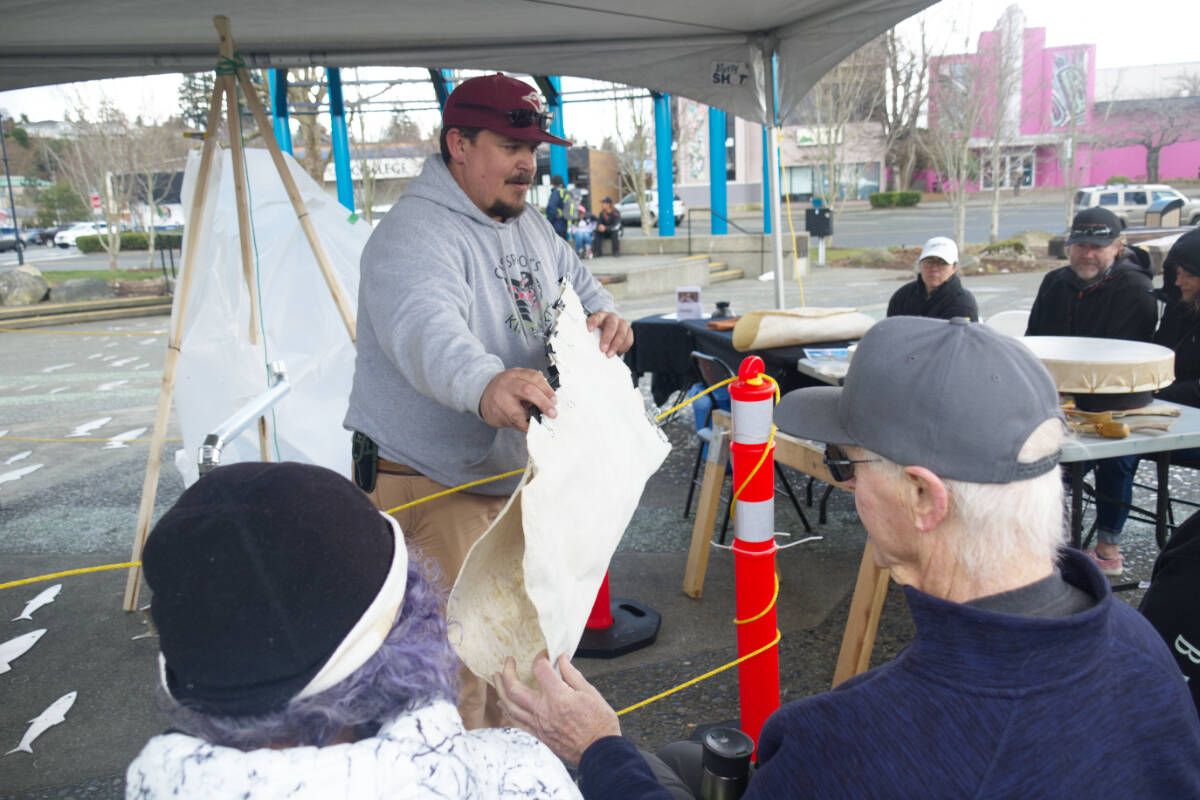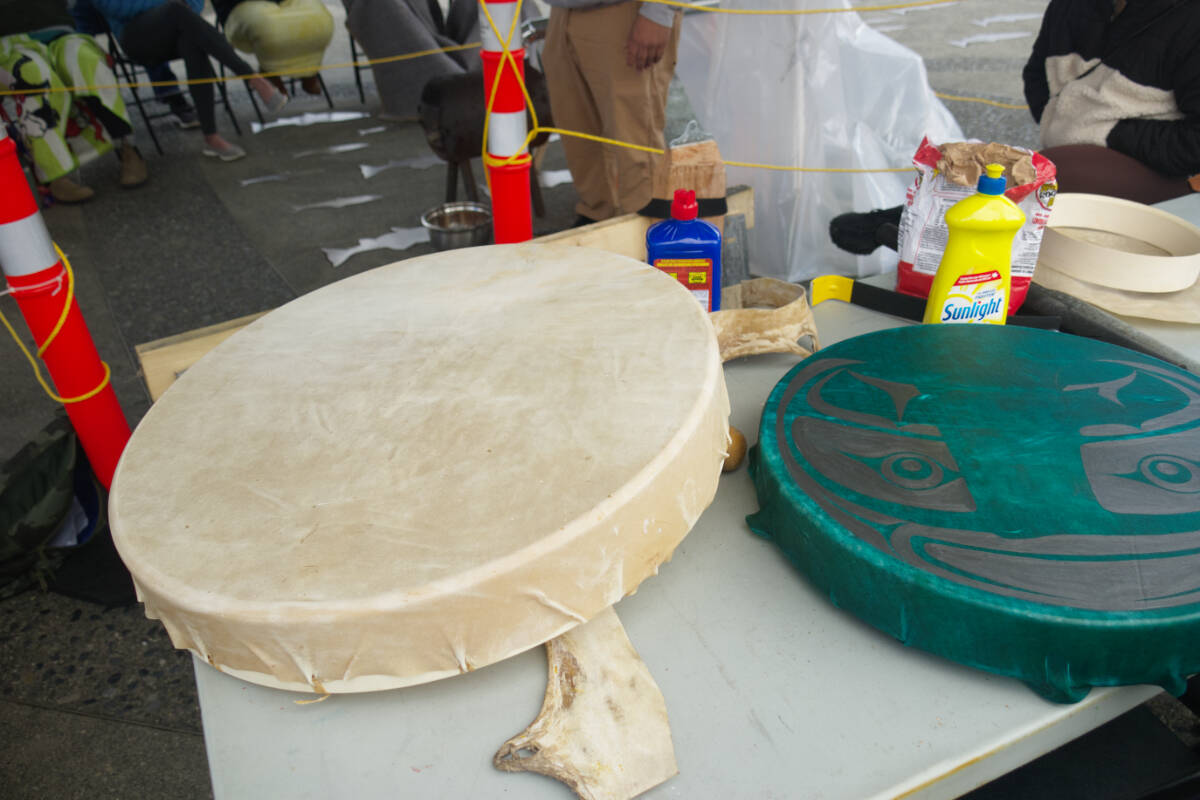It’s not where your mind usually goes when one hears the phrase “use your brain.”
But Vancouver Island Mu’la artist Shawn Decaire gave onlookers insight into a sacred and timeless tradition among Indigenous people: — the traditional brain tanning of a hide.
READ MORE: Art Hive artists present Mu’la || Gratitude at Campbell River Art Gallery
In front of a boisterous outdoor Campbell River crowd of about 40 people April 1, Decaire took questions beside his smoker. Made of an old propane tank and burning cherry wood chips, the smoker had a pipe leading up to an elk hide in its final preparation stages.
“My aim is to try to teach to reclaim some of the teachings my ancestors did once in this very land,” Decaire said to the crowd, who huddled underneath the canopy that housed the smoker.
“There’s a lot of hunters out there, a lot of providers. There’s a lot of those sacred animals that we’re letting go. We can take simple pieces of rawhide, take the entire hide, clean it and give it to our pets. My dog he loves a piece of rawhide, most dogs do.”
Throughout the 90-minute event, onlookers got to feel sample pieces of leather, such as rabbit, elk, and cowhide. Decaire passed them around while the crowd asked questions.
A practice in Indigenous tradition and culture, brain tanning is a rigorous process that involves literally rubbing the brain tissue of a hunted animal and water into a wet rawhide.
The emulsion helps break down the membranes that have to be removed. The hide is then softened by working it against a cable, before being rung out and ultimately smoked. The hide can be used for clothing, or traditional Indigenous toys or drums. The drum which Decaire played to open the presentation, was put together on Friday.
“The drum I just sang that song on, was just a piece of rawhide yesterday,” said Decaire. “I just tied that drum yesterday, and now I get to share it today.”
The event was put on by the Campbell River Art Gallery, as part of the Mu’la exhibition curated by Nadine Bariteau. The exhibit runs through until April 29.
Edward Hitchins
edward.hitchins@campbellrivermirror.com
Like us on Facebook and follow us on Twitter
025050
Campbell RiverIndigenous cultural groupsIndigenous peoples
